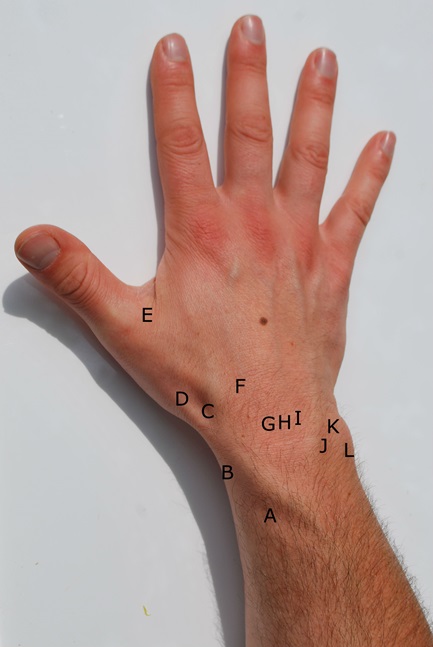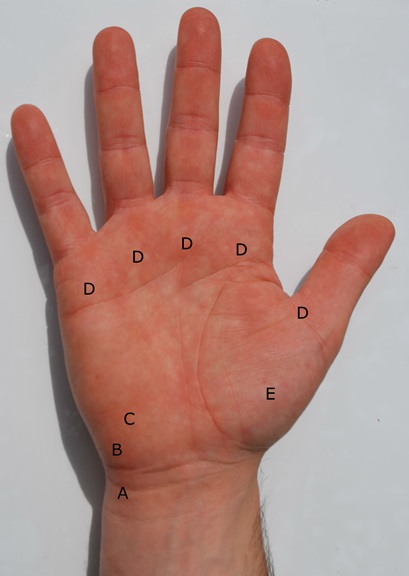◔
Hand and Wrist Examination
From WikiMSK
This article is a stub.
Sequence
Inspection
- Expose both limbs to the elbow
- All aspects
- Don’t forget forearm or ulna aspects
- Seated, hands on pillow or desk
- Posture/alignment
- Tremor
- Swelling
- Colour
- Wasting
- Scars
Movement
- Wrist
- Observe supination/pronation rhythm as you inspect
- Flexion/extension
- Radial/ulnar deviation
- Pronation/supination
- Fingers
- Flexion/Extension
- MCPJs – 0-90°
- PIPJs – 0-110°
- DIPJs – 0-90°
- Abduction/Adduction
- Thumb
- Adduction, abduction, opposition, flexion, extension
Palpation
Dorsal Wrist Pain
- A = Intersection syndrome
- B = De Quervain’s tenosynovitis
- C = Scaphoid fracture / Wartenbergs syndrome (nerve entrapment)
- D = Base of thumb arthritis
- E = Ulnar collateral ligament injury
- F = Carpal boss
- G = Scapholunate ligament tear
- H = Keinbock’s disease
- I = Lunotriquetral ligament tear
- J = DRUJ (distal radioulnar joint) arthritis / instability
- K = Ulnar impaction / TFCC tear
- L = ECU dislocation / tendonitis
Volar Wrist Pain
- A = FCU tendonitis
- B = Pisiotriquetral arthritis / Ulnar nerve entrapment / ulnar artery thrombosis
- C = Hook of hamate fracture
- D = Trigger finger
- E = Base of thumb arthritis
Special Tests
Special Tests (depends on site of pain, ulnar, radial or mid)
- Scapholunate instability - Watson test
- DRUJ instability - Compression/ballotment test, Piano key, Drawer
- Lunotriquetral instability – lunotriquetral ballotment test
- Finkelsteins
- Radiocarpal and midcarpal drawer tests
- Ulnocarpal stress test
- ECU subluxation
- 1st CMC OA – CMC grind test, shuck test, see progressive adduction with hyperextension



